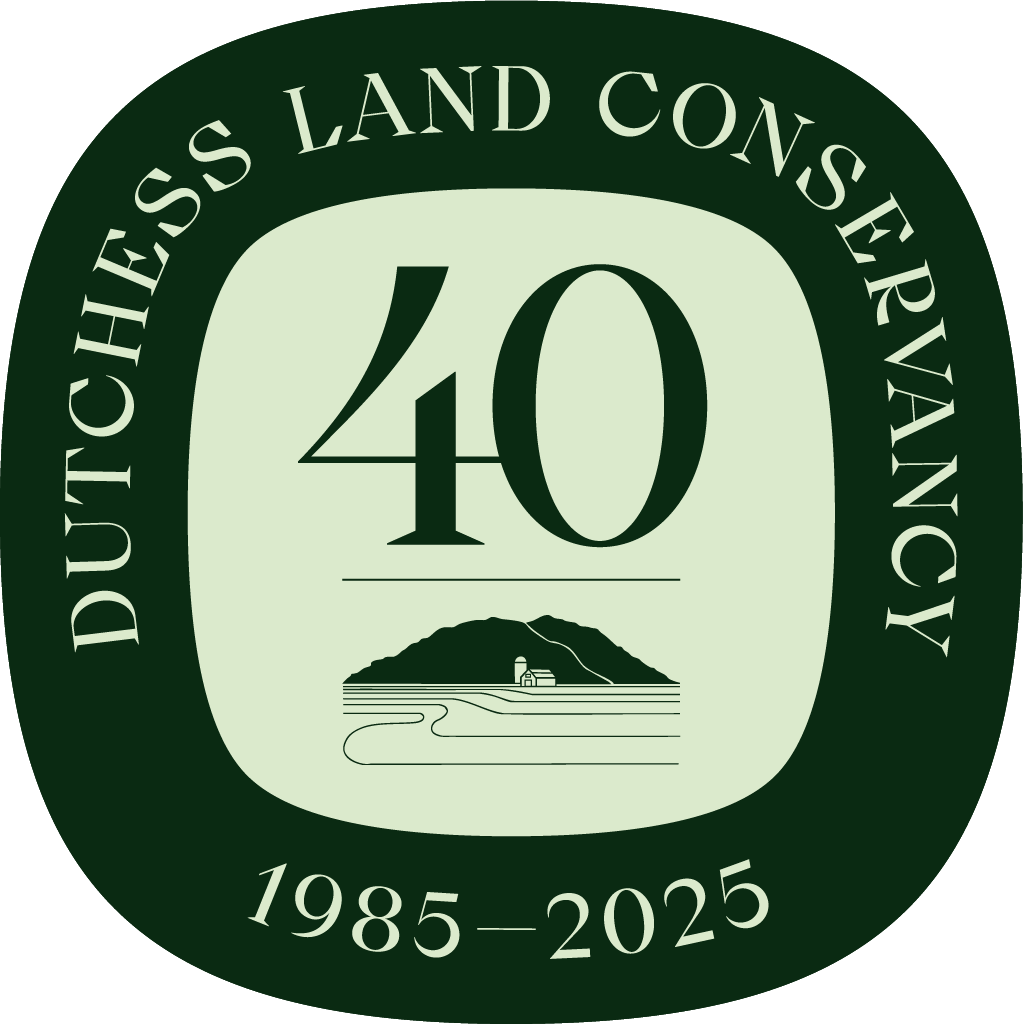What is a Conservation Easement?
A conservation easement is a voluntary legal agreement between a landowner and a qualified not-for-profit conservation organization (such as the DLC) or government agency that permanently preserves land. The conservation easement restricts the use and development of a property in a manner that protects specific conservation resources (e.g. wetlands, forests, scenic views, agricultural fields). Conservation easements are flexible documents and can be written to fit the needs of the landowner while still conserving important resources on the property. They are legal documents that are recorded with the County Clerk and remain on the land no matter who owns it in the future.To whom is a Conservation Easement given?
A conservation easement can be given (granted) to a qualified not-for-profit conservation organization (like the DLC) or to a public body such as the state, county or a town. The recipient of the conservation easement (the holder) must accept it in writing and agree to enforce the terms of the easement.If I grant a Conservation Easement, do I still own and control my property?
Yes. By granting a conservation easement the landowner gives up certain rights on their property (mostly with regard to development) but they keep their right to own, sell, lease, mortgage, farm, build upon or otherwise use their property as long as such uses are consistent with the terms of the conservation easement. The easement holder only has the right to monitor and enforce the terms of the conservation easement.How does a Conservation Easement protect my land?
A conservation easement restricts the use and development of the land. Specific areas may be designated on a conservation easement map to show where development is appropriate (building envelopes) and areas that should be protected (preservation areas). For example, a landowner may have a significant wetland on their property or a steeply wooded ridgeline that they would like to protect. These areas can be designated as preservation areas in the conservation easement. Designated preservation areas can help ensure important habitat, farmland, water resources and scenic views are forever protected.Can I grant a Conservation Easement and still build on my land?
Yes. The DLC understands that landowners must balance their development needs with their conservation goals. Based on a landowner’s first-hand knowledge of the resources on their property, the DLC can work with them to determine the most appropriate places to build that will minimize any impact on the resources they wish to protect. This can be accomplished through designating building envelopes as well as limiting the number and size of structures that can be built. All conservation easement restrictions are written in consultation with the landowner to assure that future structures are sited in appropriate locations and that important resources are protected.Does a Conservation Easement require me to allow public access to my land?
No. A conservation easement does not give the public any rights to access private land unless a landowner decides to include such rights in the easement.How is a Conservation Easement enforced?
A conservation easement is enforced by the organization or government agency that holds the easement. After providing notice to all conservation easement owners, the DLC conducts annual aerial monitoring. Additionally, every three to four years, the DLC provides notice and works out a convenient time with landowners to ground monitor easement protected properties. Aerial and ground monitoring allow the DLC to observe changes to properties and ensure that landowners are following the terms of their conservation easements. If a violation occurs, the DLC will work with the landowner to voluntarily cure the violation. Although not preferable, if necessary, an easement can be enforced by court action.Will granting a Conservation Easement affect my property taxes?
Tax assessments are made by local assessors based on the fair market value of property. Undeveloped land does not demand as many municipal services as does developed land. Logically, a highly restrictive conservation easement that reduces a property's market value should be reflected in a lower assessment, but this decision falls within the discretion of the local assessor. If a landowner grants a conservation easement, they should make your local assessor aware of the restrictions on their property and discuss whether their property could receive a reduced assessment. It is often best to present a qualified appraisal showing the value of the restricted property to the assessor during this discussion.Some land under conservation easement receives special tax treatment by way of agricultural assessments under the Agricultural Districts Law (Section 25 AA of the Agriculture and Markets Law) or the forestry exemptions under the Forest Tax Law (Section 480-a of the Real Property Tax Law). For property tax purposes, a conservation easement may have little impact on land enrolled in these programs as the properties are already required to remain open and in active agricultural or forestry production and receive reduced assessments. While assessors may use their discretion with respect to reducing property assessment regarding conservation easements, agricultural assessments and forestry exemptions are mandatory.
While conserved land may or may not receive favorable treatment with the local assessor, there is another way that conservation easements can help with your local tax bill. In 2006 New York State enacted a first-in-the-nation tax credit for conservation easements. This tax credit helps landowners with conservation easement protected land by refunding a portion of the real estate and school taxes that they pay every year.
Are there tax advantages for donating a Conservation Easement?
A landowner who donates a qualified conservation easement may qualify for Federal and State income tax benefits. A donated conservation easement, in compliance with the Federal tax code, is considered a charitable gift and the landowner can qualify for a Federal and State income tax deduction for the value of the gift. Additionally, donating a conservation easement can result in significant estate tax savings when incorporated into effective estate planning. The DLC recommends that all landowners consult with their legal and tax professionals before donating a conservation easement to discuss all the potential tax and financial implications.What is the difference between a Conservation Easement and a Deed Restriction?
Deed restrictions, also known as restrictive covenants, are voluntary private restrictions that limit the use and development of land. The parties seeking to limit the use of a property or properties enter into a contract that may be enforced by the parties to the contract and/or specific adjoining landowners who directly benefit from the deed restrictions. Deed restrictions can include the same restrictions set forth in a conservation easement (e.g. limitations on where to build, size of structures, clearing of trees). However, deed restrictions do not enjoy the same legal status as a conservation easement and are not afforded the same potential tax benefits.While deed restrictions may in some circumstances be eliminated by the mutual consent of landowners or through court action, it is much more difficult to remove a conservation easement. A combination of deed restrictions and a conservation easement provides the strongest protection, because the parties to the restrictions, the adjoining owners and the DLC have enforcement rights, and the conservation easement enjoys a special legal status that makes it difficult to overturn in court.
If you are interested in learning more about conservation easements, please contact us at (845) 677-3002.
This information does not constitute legal or tax advice and DLC strongly recommends that you discuss your land conservation options with legal and tax professionals.


 © Dutchess Land Conservancy. All Rights Reserved.
© Dutchess Land Conservancy. All Rights Reserved.








